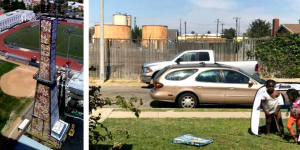Tech for change video series: Left in the dark
This is part 3 of EDF’s Tech for Change series, which aims to spotlight the way pollution-sensing technology can protect public health and the environment in California. Watch part 2 or 4.
Los Angeles sits atop the nation’s largest urban oilfield, and over 3,500 oil and gas wells are sprinkled throughout LA County. They exist in neighborhoods ranging from posh Beverly Hills to less affluent areas like Compton, but not all of these wells are created equal.
More affluent areas benefit from stronger regulations that minimize the impact of oil and gas development, but there is often much less oversight of wells that sit in lower-income neighborhoods. It’s a difference one can’t help but notice:

More importantly, it’s a difference felt by the people who live with these wells. Some are lucky to live by well-managed wells, with companies that provide 24/7 call services to keep residents informed about potential issues. Others aren’t as fortunate, and have no way of knowing what sorts of harmful pollution might be emitted from a nearby well, or of contacting the company responsible for it.
No one deserves to be kept in the dark about something that could threaten their health, safety, or neighborhood environment. That’s why real-time monitoring and commonsense regulations are so important in places like LA, where people and industry have to exist side-by-side.











